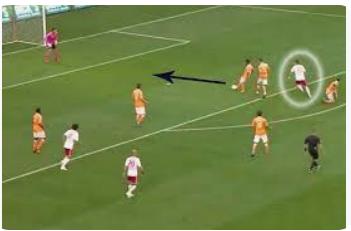The following Building Block Concepts provide a hierarchical checklist for game assessment.
*Formation
— Does the team have a recognizable structure?

*Roles
Do the players understand their areas of operation?
*Role Duplication (Spacing)
Are the players trying to fill the same role?
The tactical advantage is conceded to the defending team when attacking players are too close together, particularly during the build-up.
*Rhythm and Ball Circulation
Does the ball flow between players and to different spaces?

*Vision and First Touch
Do the players react or plan?
*Verbal Communication
Do the players give each other direction?
*Non-Verbal Soccer Communication
Is passing purposeful? “Soccer communication” involves …
1) The player in possession – or coming into possession – makes eye contact with a teammate to signal that a pass is about to be made.
2) The receiver moves to signal where and how the pass should be delivered.
*Mobility
Do the players move within and between the lines?

*Use of Space / Timing of Runs
Do the players “arrive” on time?
Players in open passing lanes do not need to reposition. At the same time, those marked by a defender must move into the right space at the right moment to receive a pass.
*Speed of Play
Is the tempo generally fast or slow? Does the tempo change?
*The Goalkeeper as an Attacking Player
Is the goalkeeper involved?

*The Influence of the Opponent
What is the opponent’s strategy?
Note: Coaches who can learn to read the game through a more systematic methodology will be more able to help their teams improve how they perform on the field (a set of observable constants) and “perhaps” will then learn how to create more meaningful practice activities as a result of better game understanding – a more creative challenge.

In case you missed previous articles giving ideas for you to consider and assign your players to complete when watching WC games!
(Click) “Watch With a Purpose.” by Karl Dewazien.
(Click) “That Improved My Coaching.” by Bill Howe.




